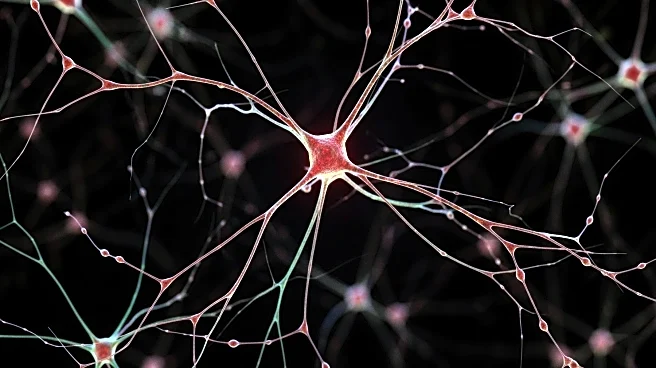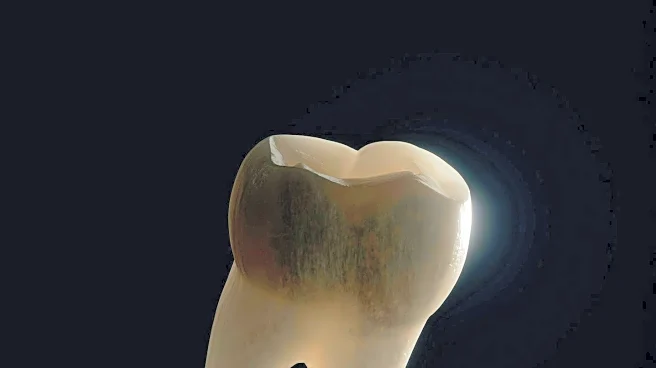What's Happening?
Researchers at the University of California, San Francisco have developed a new imaging technique that uncovers a previously unexplored ecosystem within the ovary, potentially influencing the aging process of human eggs. This discovery challenges the traditional understanding that fertility decline is solely due to a decrease in egg number and quality. The study, led by Eliza Gaylord, utilized 3D imaging and single-cell transcriptomics to analyze over 100,000 cells from mouse and human ovaries. The findings suggest that eggs cluster in pockets within the ovary, indicating that the local environment may play a significant role in how eggs age and mature. The research also identified various cell types, including glial cells and sympathetic nerves, which may impact egg maturation.
Why It's Important?
This breakthrough in understanding ovarian ecosystems could have significant implications for fertility preservation and health post-menopause. By identifying the role of sympathetic nerves and other cell types in egg maturation, the study opens avenues for potential therapies to slow or reverse ovarian aging. Such interventions could extend the reproductive window and reduce risks associated with menopause, such as cardiovascular disease. However, the study's findings are preliminary, and further research is needed to develop therapeutic applications. The similarity between mouse and human ovarian aging provides a foundation for using laboratory mice to model human ovarian aging, potentially leading to new treatments.
What's Next?
Future research may focus on modulating sympathetic nerve activity to slow egg loss, potentially extending fertility and delaying menopause. While these interventions are still in the early stages, they could eventually lead to therapies that preserve fertility and improve health outcomes for women. The study's findings also highlight the need for more comprehensive research involving a larger sample size to validate the results and explore therapeutic possibilities.
Beyond the Headlines
The discovery of the ovarian ecosystem underscores the complexity of reproductive biology and the potential for innovative approaches to fertility preservation. Ethical considerations may arise regarding the manipulation of ovarian aging processes, and long-term studies will be necessary to assess the safety and efficacy of potential treatments. The research also contributes to a broader understanding of how cellular environments influence aging, which could have implications beyond reproductive health.










